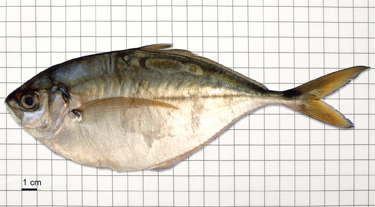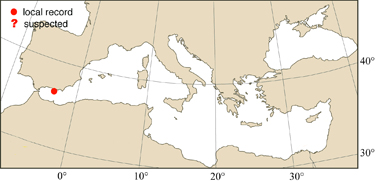
|
Meristic formula
|
|
| photo: L. Peña-Rivas |
|
SHORT
DESCRIPTION
color : body and head dark metallic greenish-blue on the upper part and silvery on sides and belly. A black saddle spot on the upper part of caudal peduncle, upper margin of the operculum dark. Pectoral and caudal fins were yellow, pelvic fins white. common size : common 25-40 cm (max. 65 cm). |
DISTINGUISHING CHARACTERISTICS
BIOLOGY / ECOLOGY
habitat : adult distribution occurs over soft bottoms from coastal waters to open ocean. Larvae and juveniles may be dominant in shallow waters, especially near estuaries. Juveniles often observed in association with jellyfishes. |
|
1st
MEDITERRANEAN RECORD
|

|
|
DISTRIBUTION
|
ESTABLISHMENT SUCCESS
|
|
|
MODE OF
INTRODUCTION |
IMPORTANCE TO
HUMANS |
|
KEY
REFERENCES
|
|
|